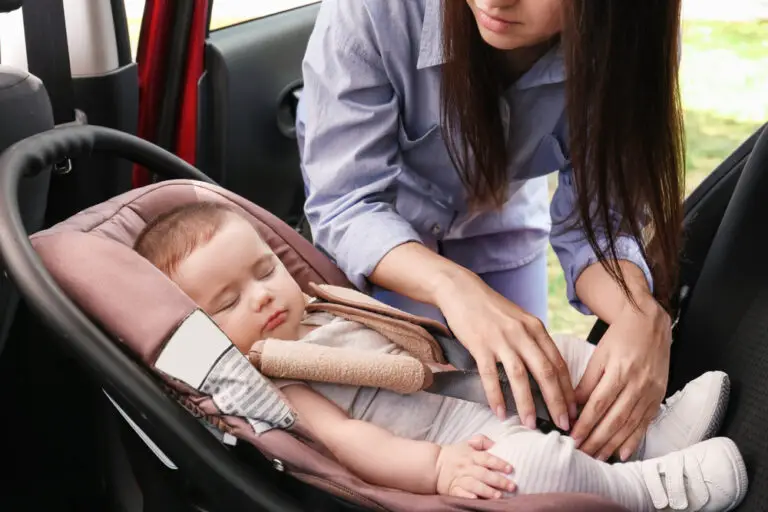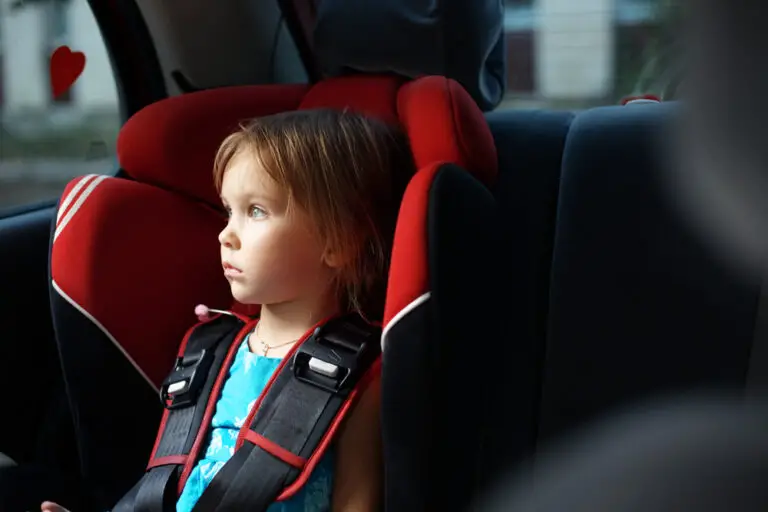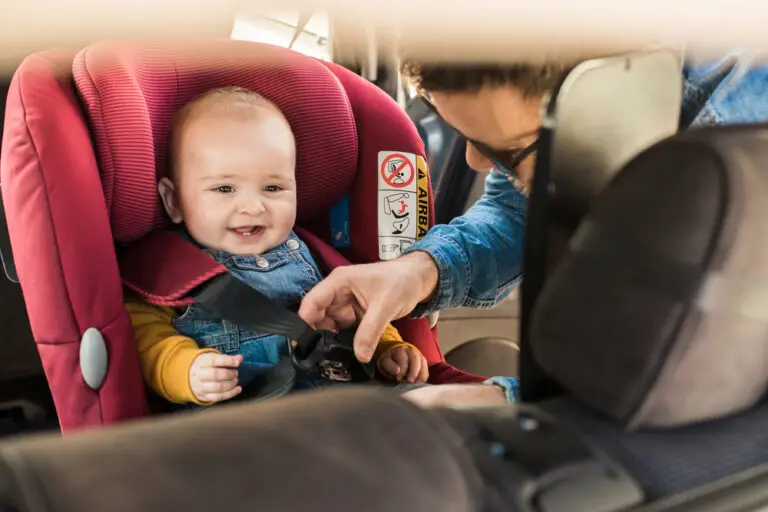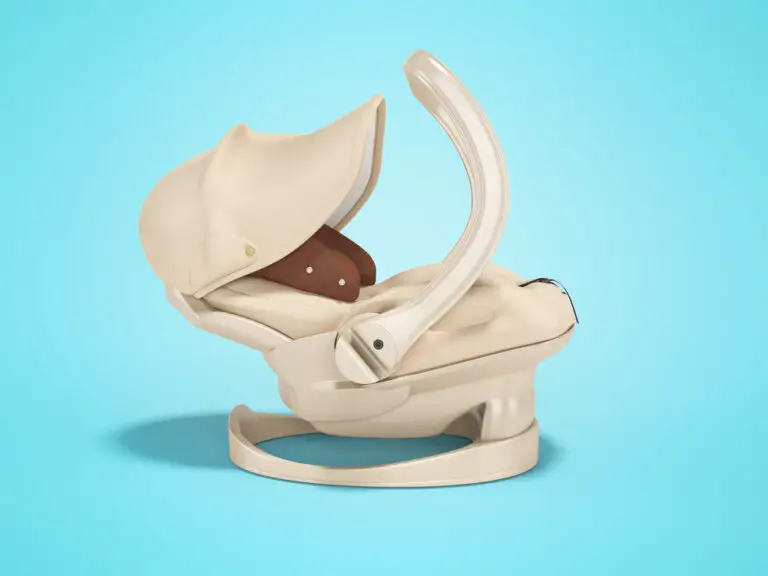Idaho Car Seat Laws 2024 (Rear, Forward & Booster)

Under the Idaho car seat laws, a child passenger 6 years old or younger, who is traveling in a vehicle manufactured with seat belts after January 1, 1966, must be secured in an appropriate child safety restraint system. The restraint must meet federal motor vehicle safety standards. A violation will result in a fine.
Disclaimer: This content does not constitute legal advice. It is solely for informational purposes. We recommend you check the original source of the law for the latest version.
- ID Rear-Facing Seat Law
- ID Forward-Facing Seat Law
- ID Booster Seat Law
- ID Child Front Seat Law
- ID Child Seat Belt Law
- ID Taxi Child Seat Law
- ID Ridesharing Seat Law
- ID Child Seat Repl. Law
- Leaving Child in Car in ID
- Choosing a Child Seat in ID
- Seat Installation Help in ID
Idaho Car Seat Laws
Idaho Rear-Facing Car Seat Law
There is no specific rear-facing car seat law in Idaho. But Idaho state law requires children aged 6 years or younger to be restrained in a federally approved child safety system. (1)
In the absence of an Idaho rear-facing child seat law, it is best to follow the recommendations of the Idaho Transportation Department. It states that babies should ride in an infant rear-facing seat till they outgrow the limits prescribed by the manufacturer. (2)
The legal rear-facing car seat age in Idaho is absent. But the State recommends that children ride in a rear-facing seat till at least 2 years of age.
Failure to properly restrain the child carries a fine of $84. (3) The motor vehicle operator will be held responsible for the violation. If the operator is younger than 18 years, they will be fined $66.50.
Age: 6 years or younger (Recommended: Newborn to 2 years)
Penalty: $84. If the operator is younger than 18 years, then $66.50.
Idaho Forward-Facing Car Seat Law
There is no express forward-facing car seat law in Idaho. Children 6 years or younger have to be secured in a federally approved car seat. (1)
Since there is no Idaho forward-facing child seat law, it is best to refer to the guidelines of the Idaho Transportation Department. The forward-facing car seat age in Idaho is absent.
But the Department states that children should ride in forward-facing seats with a harness and tether till they outgrow their maximum height and weight limits.
This occurs approximately when they turn 4 years old. (2) The National Highway Traffic Safety Administration (NHTSA) also recommends keeping children in forward-facing seats till they outgrow them.
Failure to safely secure the child in a car seat carries a fine of $84. (3) An operator younger than 18 years will be fined $66.50.
Age: 6 years or younger
Penalty: $84. If the operator is younger than 18 years, then $66.50.
Idaho Booster Seat Law
The child booster seat law in Idaho is absent. According to Idaho child seat laws, children 6 years old or young must be restrained in an appropriate car seat that is federally approved. (1) This includes a belt-positioning booster seat.
As per Idaho Transportation Department, children should ride in a booster seat till they are at least 8 years old or 4’9” tall. (2) The seat can be a high-back or a backless booster seat.
The booster seat age in Idaho is approximately 4 to 8 years, as per the Transportation Department. But once your child outgrows the height and weight limits of their forward-facing seat, they should move to a booster seat.
Not observing Idaho booster seat requirements will lead to a fine of $84. (3) If the operator is younger than 18 years, they will be fined $66.50.
Age: 4 to 8 years (recommended)
Height: Shorter than 4’9”
Penalty: $84. If the operator is younger than 18 years, then $66.50.
Idaho Child Front Seat Law
There is no express child front seat law in Idaho. But Idaho car seat regulations state that if all seat belts are occupied, then the child may ride without restraint but in the rear seat of the vehicle. (1)
The Idaho Transportation Department recommends keeping children in the back seat till they are 13 years old. (2) This is also in line with the recommendations of the American Academy of Pediatrics (AAP).
While an explicit front seat age in Idaho is not mentioned, kids can ride in the front seat if it is absolutely required. They must be placed in a child passenger safety system that is appropriate for their height and weight requirements. In the case of a rear-facing seat, the passenger-side airbag must be deactivated.
Age: Recommended: 13+ years
Idaho Child Seat Belt Law
According to the child seat belt law in Idaho, all children older than 6 years traveling in a motor vehicle manufactured with safety restraints as per the federal safety standards must wear a seat belt in the front seat as well as the backseat. (4)
The requirements of seat belt rules in Idaho don’t apply to a passenger who has a written statement from a licensed physician explaining that their medical condition does not allow them to wear an adult safety belt.
They also don’t apply to emergency vehicles, mail carriers of the US postal service, and those vehicles in which all safety restraints are in use by other passengers.
The motor vehicle operator will be liable for children not wearing a seatbelt. A violation of Idaho children’s seat belt law will result in a citation and a fine of $10.
Age: Older than 6 years
Height: 4’9” or taller (recommended)
Penalty: Citation, $10.
Idaho Taxi Child Seat Law
According to the taxi child seat law in Idaho, taxis are not required to have a child passenger safety system in place. Car seat laws in Idaho apply to “noncommercial” vehicles. (1) Since taxis are commercial vehicles, they are exempt from the law.
However, as parents and caregivers, it is best if you arrange an appropriate taxi child seat in Idaho. Depending on your child’s age, height and weight, you can select a rear-facing, forward-facing, or booster car seat. These car seats will provide adequate protection to your child throughout the ride.
When installing the car seat in a taxi, it is your responsibility as a caregiver to ensure that it is securely fixed. You can refer to the car seat manual for proper installation.
Idaho Ridesharing Child Seat Law
The ridesharing child seat law in Idaho is unclear. The general car seat law states that a “motor vehicle operator” who transports children 6 years old or younger must have a federally approved child passenger safety system in place. (1)
However, it does not specify who should provide a child seat. Nor does it specify if it applies to ridesharing services such as Uber and Lyft.
In such a scenario, either the parents/caregivers or the driver should provide an appropriate car seat. For babies, this includes a rear-facing car seat.
For toddlers and young children, a forward-facing car seat or a booster seat is required. Children who are at least 4’9” tall have to wear seat belts.
Hence, either the parents can get their own car seat, or the driver can have a versatile all-in-one car seat.
Idaho Child Seat Replacement Law
There is no express child seat replacement law in Idaho. The Idaho Transportation Department recommends replacing the seat once it surpasses its expiration date. (2)
The NHTSA recommends replacing your car seat if your vehicle is involved in a moderate or severe accident in Idaho. In case of a low-impact accident, there is no urgent need to replace the child safety seat.
A crash is said to be a low-impact one when no passenger sustains injuries, the airbags didn’t deploy, there was no damage to the car seat, and the vehicle could be driven away from the crash site.
In addition to child seat replacement after an accident and expiration, you must also replace the seat after your child has outgrown it or it has been recalled.
Leaving Child in The Car in Idaho
There is no specific law on leaving a child in a vehicle in Idaho. However, leaving a child unattended in a vehicle is extremely dangerous. The most common danger is heat stroke.
The temperature inside the vehicle can rise rapidly. Since children’s bodies heat up 3 to 5 times faster than adults, they are at great risk of suffering a heat stroke. There are other dangers too. The child can get kidnapped, set the car in motion, get strangled by seat belts or power windows or have some other in-car accident.
Even though the law does not address the issue of leaving a child in the car in Idaho, the offender may still face criminal charges under the laws of child endangerment. Thus, you should never leave your child alone in a car, even for a minute.
Choosing a Child Car Seat in Idaho
When choosing a car seat in Idaho, you should refer to the recommendations and resources provided by the Idaho Transportation Department. (2)
For infants and toddlers, a rear-facing seat is the best car seat to use in Idaho. They should ride these till the age of 2. Once they outgrow it, you can place them in a forward-facing seat with a harness and tether.
Children shorter than 4’9” should be placed in a belt-positioning booster seat. The best booster seat to use in Idaho is the one that perfectly secures the child in the lap and shoulder belt. It can be a high back or backless booster seat.
Car Seat Installation Help in Idaho
Installing child passenger safety seats in Idaho can be difficult, especially if you have not done it before. You have to follow the car seat manual as well as your vehicle manufacturer’s manual. The seat must be securely installed for maximum protection of your child.
Many parents install the car seats incorrectly. To ensure that it is safely installed, you should get it inspected by a certified child passenger safety (CPS) technician. Some stations where you can get assistance are:
- Meridian Fire Department
- St. Luke’s
- Saint Alphonsus Medical Center
- City of Coeur d’ Alene Fire Department
- Kuna Rural Fire District
- Kootenai Health
Idaho Car Seat Safety Resources
- Highway Safety: Idaho Department of Transportation: The official website of the state’s transportation department, it has all the information about child seat requirements in Idaho, from recommendations and car seat details to inspection sites.
- Shift: It is an initiative of the Office of Highway Safety to reduce the number of accidents in Idaho. It encourages people to focus on safe driving practices.
- Idaho Chapter, American Academy of Pediatrics: It promotes welfare of children in Idaho. Its website has vital safety resources for parents, such as car seat safety tips, a list of car seat checks, and how to register your car seat.
- Bingham Memorial Hospital
FAQ
How long should a child ride in a rear-facing car seat in Idaho?
The Idaho Transportation Department recommends that a child ride rear-facing till they are at least 2 years old or till they outgrow its height or weight limits.
Can you put a rear-facing car seat in the front seat in Idaho?
Children in a rear-facing seat should be secured in the backseat. If necessary, they can ride in the front seat but the passenger-side airbag must be deactivated.
Can you put a rear-facing car seat in the middle rear seat in Idaho?
You can put a rear-facing car seat in the middle rear seat only if it fits properly. You must check the car seat as well as your vehicle’s manuals.
When can a baby face forward in a car seat in Idaho?
The Idaho Transportation Department recommends that children can face forward once they are 2 years old or have outgrown the limits of their rear-facing seat.
How old for a booster seat in Idaho?
There is no specific age mentioned in the law. Children should ideally ride a booster seat once they have outgrown the height and weight limits of their forward-facing car seat.
When to use a backless booster seat in Idaho?
You can use a backless booster seat if your vehicle seat has a headrest and the child’s ears are not higher than the seat back.
When can a child sit in the front seat in Idaho?
There is no specific age. The Idaho Transportation Department recommends that children younger than 13 years ride in the backseat as it is safer there.
When can a child sit in the front seat with a booster in Idaho?
Children in booster seats should ride in the back. But if absolutely necessary, they can ride in the front seat but it must be pushed away from the dashboard.
When can a child stop using a booster seat in Idaho?
A child can stop using a booster once they turn 6 years old or are at least 4’9” tall. That is when the adult safety belt fits them properly.
When to switch from 5 point harness to a seat belt in Idaho?
The ideal time is when the child outgrows the height and weight limits of a 5-point harness in a forward-facing seat. They can then switch to a booster seat.
When can a child use a regular seat belt in Idaho?
A child can use a regular seat belt once they are 6 years old or at least 4’9” tall. The lap and shoulder belt should fit properly across their collarbone, chest and hips.
Do you need a car seat in a taxi in Idaho?
Taxis are not required to have a car seat. However, it is recommended that you carry an appropriate car seat for maximum protection of your child.
Do you need a car seat in a Uber in Idaho?
The law is unclear. But either the parent/caregiver or the driver should provide a federally approved and appropriate car seat to ensure the child’s safety.
Do you need a car seat in a Lyft in Idaho?
The law does not say anything. But it is better if the parent/caregiver or driver can provide an appropriate car seat to ensure the child’s safety.

Rishima Rawat
Rishima Rawat is a lawyer and legal writer with over six years of writing and legal experience. She earned her LLB degree from the West Bengal National University of Juridical Sciences, Kolkata. With a passion for child safety, she’s written extensively about the U.S. car seat laws in ParentingMode. She collaborates with businesses and law firms globally, enhancing their online content. Her insights are also published in legal journals like RGNUL, NLIU, and RMLNLU Law Review. Committed to the cause of education, she has volunteered with IDIA, which helps underprivileged children in India to access legal education. She has also worked with Enhelion Knowledge Ventures, a leading legal ed-tech platform in India that provides students with affordable courses in law. Fluent in English and Hindi with elementary proficiency in Spanish, Rishima combines her legal expertise with a dedication to child safety.






